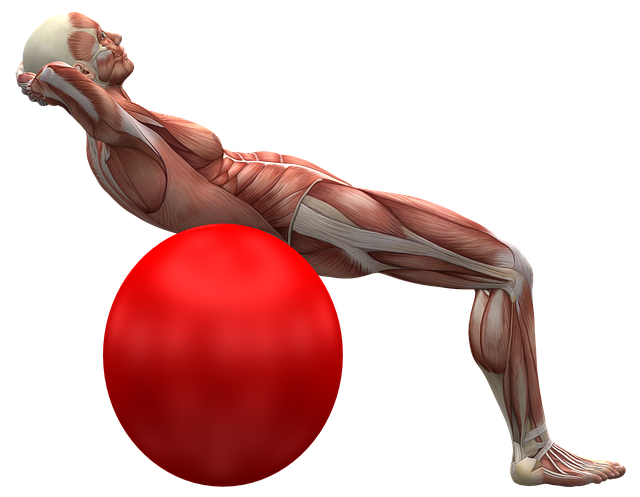Hello!
I know that many of you have been out of anatomy classes (like me :) ), but ... if you want results in sports it's good to know:

source: pixabay
Types of muscles involved in movement:
- agonists - the main muscles conducting the movement.
- synergists - muscles that assist in moving the agonists.
- antagonists - muscles opposed to agonists, relax during agonist action. They have it a protective role, modulating the force of agonist contraction (when the biceps contracted very much strong contraction and triceps to prevent biceps tendon withdrawal).
- stabilizers - are small muscles that contract isometrically to anchor a bone.
Types of contraction:
- isotonic - the most common, altering the length of the muscle, causing the articular movement to be dynamics. The contraction tension remains the same theoretically, along the movement.
- concentric - shortening the length of the muscle, is possible if the load is lower than the maximum potential.
- eccentric - or negative, return the muscle to the starting position. It is most effective, as well gain of muscle strength. It is also possible if the load exceeds the maximum potential.
- isometric - muscle tension increases, muscle fibers do not change length, the angle of the joints does not change, they are static. The tension is higher. During this type of contraction, the muscle goes into the "oxygen debt" for circulation muscle is partially disrupted and metabolites accumulate.
Muscle fibers - are the ones that determine performance in a particular sport:
- they dictate the potential for development;
- can be classified according to the maximal force developed, the rapidity of the contraction, the fatigue resistance.
All muscle fibers are designed to contract and produce strength. But not all muscle fibers are the same then when it comes to contractile performance Muscle fibers in the same muscle differ in strength produce, in the unit of time they produce this force, in their preference for anaerobic or aerobic metabolism, in degree of fatigue.
A biochemical property of muscle fibers is the ability to produce aerobic ATP, the feature called oxidative capacity, when oxygen is needed for aerobic metabolism.
Fiber that has numerous and large mitochondria, and which are surrounded by a large capillary network that provides blood and oxygen are considered as oxidative fibers. They possess a large amount of myoglobin (which takes the oxygen out of the membrane cellular muscle in the mitochondria) thus increasing aerobic capacity and reducing dependence on anaerobic ATP production.
Are divided into two categories:
I. Slow shrinkable fibers
II. Fast shrinkable fibers
IIa. FOG (fast oxidative glycolytic) - Moderate oxidative and anaerobic capacity
IIb. FG (fast glycolytic) - pure anaerobes, get tired quickly - the difference between them is given the contraction rate, being determined by the form of ATP-aza myosinica, this being an enzyme that "breaks" the ATP molecule generating energy.
I. Red fibers, slow shrinkage fibers - reach maximum tension by shrinkage in 110 milliseconds. Higher stress resistance, consistent with long-lasting efforts.
Powered by the aerobic energy system. It requires the continuous restoration of the ATP and a greater amount of mitochondria. It requires a powerful enzyme device to catalyses the carbohydrate and lipid metabolism responses for production energy. These reactions require the presence of oxygen. They use fatty acids like the source is energy. The nerve cell is small and innervates between 10-180 fibers muscle. Develops long and continuous contractions. They are recruited into types of effort small and medium.
II. White fibers, fast-shrinking fibers - reach maximum tension by shrinkage in 50 milliseconds. They have little resistance to effort, but they develop a greater force than the red ones, 3-5 times higher. They have white color due to low consumption myoglobin. They are recruited into intense effort, anaerobic effort. systems anaerobes are designed to sustain strong muscle contractions in the absence oxygen. The nerve cell is large, it nourishes between 300-500 muscle fibers.
Develops short and energetic contractions. Give speed and strength. They have an increased amount of contracted proteins, having a higher volume. The small number of mitochondria causes restoration of limited ATP.
Stay fit and healthy!
Have a nice day :)
If you liked it Upvote and Follow me!